Hyperbolic Spidrons
A Spidron is an alternating sequence of isosceles triangles of decreasing size that assemble into a spiral arrangement. Two Spidrons can be joined by a half-turn to create an attractive S-shaped double spiral.
If a Spidron is constructed with the correct angles, a number of them can be arranged around a regular polygon. Alternatively, n Spidrons can be constructed inside a regular n-gon by drawing a decreasing sequence of inscribed regular and star polygons.
This regular polygon construction adapts itself naturally to other spaces. Most notably, it applies to polygons in the hyperbolic plane. And in the hyperbolic plane, there are infinitely many regular tilings to work with!
I've done some experiments drawing hyperbolic Spidron arrangements. The results have the characteristic look of all hyperbolic pictures, but are fun to look at. Note how different colourings bring out the different geometric features of the tilings. One other thing to observe is that these Spidron arrangements give you a sense of infinity in two different ways. There's the infinity of ever smaller Spidrons as we approach the edge of the bounding circle, the infinity that Escher sought to capture on a finite page. But within each ring of Spidrons, there's also an infinitely decreasing sequence of triangles that make up each spiral. The tiling as a whole is an infinite collection of infinite objects.
Gallery
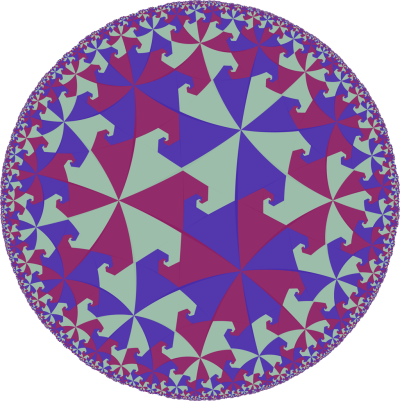
|
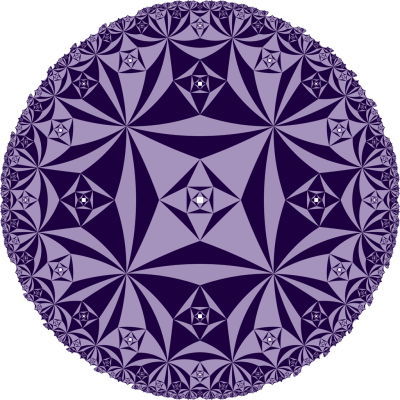
|
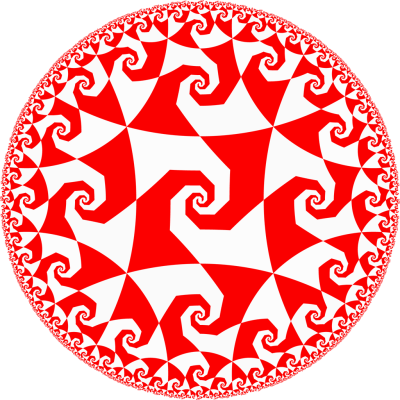
|

|

|
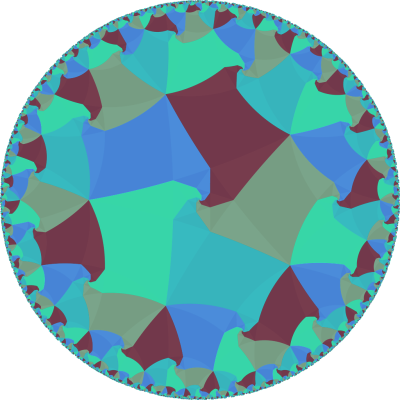
|
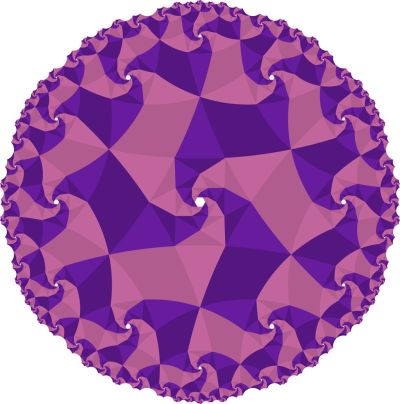
|

|
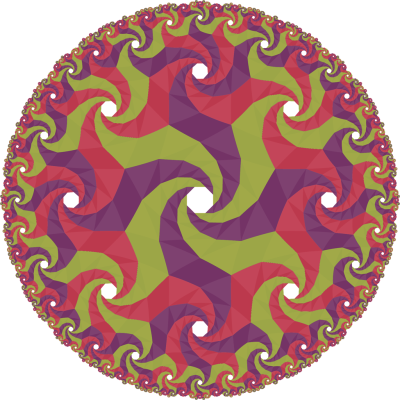
|
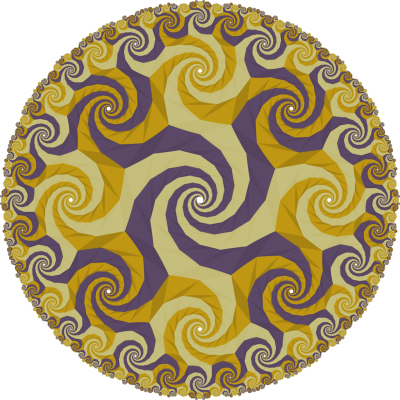
|